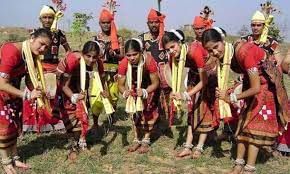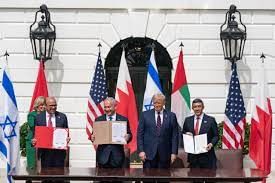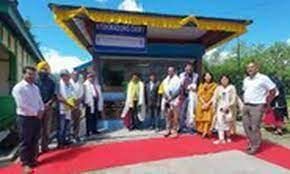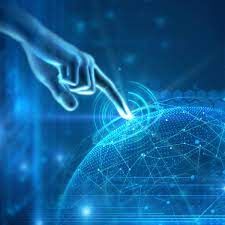UPSC Daily Current Affairs - 22nd September 2023 | Current Affairs & Hindu Analysis: Daily, Weekly & Monthly PDF Download
GS-I
Nuakhai Festival
Subject: History , Art and Culture

Why in News?
The Prime Minister has greeted the people on the auspicious occasion of Nuakhai.
About Nuakhai
- Nuakhai, also known as Nuakhai Parab or Nuakhai Bhetghat, is alternatively referred to as Navakhai Parv in Chhattisgarh.
- Nuakhai is predominantly an agricultural festival celebrated by tribal communities and Hindus residing in Western Odisha.
- It is also observed in the adjacent regions of Simdega in Jharkhand, where the cultural influence of Western Odisha is prominent.
- Nuakhai is observed to mark the arrival of the new rice harvest.
- The term “nua” signifies new, and “khai” represents food, symbolizing the farmers’ possession of the freshly harvested rice.
- This festival falls on the panchami tithi (the fifth day) of the lunar fortnight in the month of Bhadrapada (usually August- September).
- It occurs the day following the Ganesh Chaturthi festival.
Historical Roots
- Nuakhai traces its origins back to ancient times, with its roots in the Pralambana Yajna, which involves harvesting the first crop and making a reverential offering to the mother goddess.
- In its present form, the festival is linked to the time of the first Chauhan King Ramai Deva of Patnagarh in western Odisha.
Course of Celebrations
- Nuakhai festivities encompass a series of nine rituals commencing with Behrana and culminating in Juhar Bhet.
- Beheren: This marks the announcement of the scheduled meeting date.
- Nuakhai: The highlight of the celebration involves partaking in the freshly harvested crop after offering it to the deity, accompanied by lively dancing and singing.
- Juhar bhet: It involves seeking blessings from elders and exchanging gifts with them as a gesture of respect and affection.
Source: PIB
GS-II
Bharatkosh portal
Subject: Polity and Governance

Why in News?
Union Minister of Civil Aviation inaugurates ‘Udaan Bhawan’ at Delhi’s Safdarjung Airport.
About Bharatkosh portal:
- It is the initiative of the Controller General of Accounts, Ministry of Finance, Government of India.
- It provides one stop services to deposit any fees/fine/other money into the Government account.
- It converges all the Civil Ministries/Departments of Government of India.
- It aims to provide 24X7 year round electronic services to deposit the money into Government accounts using internet based payment technologies to the users at the door step through the web based portal.
- It thus leverages the e-Governance commitment of the Government to provide e-efficient, e-effective, e-excellent government anywhere anytime.
How will the e-wallet facility will work?
- The e-wallet will be particularly useful for processing of fees for various regulatory approvals in the Bharatkosh portal.
- It acts as a prepaid wallet that would enable registered users to add funds in advance.
- Initially, only NEFT/RTGS mode will be allowed for adding funds. The users would also be able to generate receipt and challan instantly.
- The process will enable the generation of receipts and challans instantly, eliminating the problem of failed bank transactions.
- The facility will only be available to registered Bharatkosh users, wherein a unique wallet ID will be generated for each user to manage the wallet transactions.
Source: PIB
Asia Pacific Forum
Subject: International Relations

Why in News?
The President of India, Droupadi Murmu recently inaugurated the Annual General Meeting and Biennial Conference of the Asia Pacific Forum on Human Rights in New Delhi.
About
- Background: The Asia Pacific Forum (APF) was established in 1996.
- Secretariat: Sydney, Australia.
- Mandate: To bring together National Human Rights Institutions (NHRIs) of the Asia Pacific to address human rights challenges in the region.
- Members: From five founding members, the APF membership has expanded to 26 NHRIs – 16 ‘A status’ members, nine ‘B status’ members and one currently suspended member (Afghanistan).
- Membership Criteria: To be admitted as a full member, a NHRI must fully comply with the minimum international standards set out in the Paris Principles. NHRIs that partially comply with the Paris Principles are granted associate membership.
Paris Principles
- The Paris Principles (‘Principles Relating to the Status of National Human Rights Institutions’) set out the minimum standards that NHRIs must meet in order to be considered credible and to operate effectively.
- They were endorsed by the Vienna World Conference on Human Rights and the UN General Assembly in 1993.
APF and GANHRI
- The Asia Pacific Forum (APF) is one of four regional networks of NHRIs within the Global Alliance of National Human Rights Institutions (GANHRI).
- Other 3 Regional groupings of NHRIs are
- Network of African National Human Rights Institutions (NANHRI)
- European Network of National Human Rights Institutions (ENNHRI)
- Network of National Institutions in the Americas
- Full membership of the APF is equivalent to the GANHRI accreditation of “A status” and associate membership of the APF is equivalent to the GANHRI accreditation of “B status”.
Global Alliance of National Human Rights Institutions (GANHRI)
- GANHRI was previously known as the International Coordinating Committee of institutions for the promotion and protection of human rights (ICC).
- GANHRI is a global network of national human rights institutions (NHRIs). It is constituted as a non-profit entity under Swiss law.
Source: PIB
Three Years of Abraham Accords
Subject: International Relations

Why in News?
September 2023 marks an important milestone for West Asia and North Africa - 3 years since the signing of the Abraham Accords.
What is Abraham Accord?
- Signed in - 2020
- Agreement between - United Arab Emirates, Bahrain and Israel.
- Mediated by – The US
- Objective- To normalise ties between these Arab Gulf states and Israel.
- Following the signing of the Abraham Accords in 2020, 5 Arab states (Egypt, Jordan, UAE, Morocco and Sudan) have established diplomatic ties with Israel.
How Abraham Accords promote regional ties among the parties?
- Diplomatic ties - It had led to normalising diplomatic ties of Israel with the UAE and two other countries in the region, marking an important shift in the stance of West Asian countries on Israel.
- Security - Normalization has opened new opportunities for defense and security cooperation, especially among Israel, Bahrain, and the UAE, which share a common perspective on the security threat posed by Iran.
- People to people connect - – It not only connects governments but also brings people together, despite the differences in their language, religious beliefs, cultures and more.
- Trade - The scope of trade between Israel and other West Asian countries increased 74% between 2021 and 2022.
- Tourism –Number of visits from Israel to the UAE & Bahrain has increased largely.
- Collaborative projects –The Prosperity Green & Blue agreement was signed between Israel, the UAE, and Jordan.
- A solar field in Jordan to supply 600 megawatts of electricity to Israel in return for water from Israel.
- Programmes for Youth – Youth delegations between two nations have been initiated, encouraging bonds between tomorrow’s leaders.
- Educational collaboration – Shared educational activities and advance student and professor exchange programme were started.
- Foster coexistence and religious tolerance – UAE has incorporated Holocaust education into its school curriculum as a mandatory subject.
How the Abraham Accords benefits India?
- India holds a significant position among Abraham Accord partners.
- Improved connectivity – Greater convenience of direct flights between the UAE and Israel, as well as between Israel and Bahrain.
- Indian students – They are enjoying increased ease of travel, gaining improved access to Israeli universities and the opportunity to explore international study programmes.
- Trade – The normalisation has increased the flow of economic opportunities reaching India.
- Companies from the UAE, Israel, Bahrain, and the U.S., are partnering with the Indian private sector.
- New joint ventures were set in Bahrain, Israel, UAE and India in critical sectors such as clean energy, health, innovation, technology, agriculture, water, trade, tourism, etc.
- Promoted the I2U2 Group – I2U2 group, which has been called the “West Asian Quad”, comprises of India, Israel, the U.S., and the UAE.
- Its primary focus will be on joint investments in critical areas such as water, energy, transportation, space, health, and food security.
What are the shortcomings of the Accord?
- Engaging other countries - Despite some softening in its position on bilateral relations, Saudi Arabia has held firm in its commitment to the pre-existing Arab Peace Initiative (API).
- For Palestinians – The stalemate between Israel and the Palestinians is still a hindrance to expanding the circle of normalization.
- None of these deals changed the situation on the ground in the Middle East’s hotspots, particularly in Palestine.
- Israel continues to be engaged in systematic ethnic cleansing of Palestinians.
- Public opinion - Despite the normalisation efforts, surveys indicate that Arab publics continue to view Israel in a negative light.
Source: PIB
GS-III
Nyukmadung Dairy
Subject: Economy

Why in News?
In Arunachal, a parlour for yak milk. The Nyukmadung Dairy, situation about 2,800 metres above sea level, aims to popularise a range of products from the milk of the animal that’s referred to as the ‘ship of the Himalayas’ .
About Nyukmadung Dairy:
- It is located at the farm of the Indian Council for Agricultural Research-National Research Centre on Yak.
- The farm in the West Kameng district is about 25 km from Dirang, where the yak research centre is situated.
- Objective: To make yak farming more remunerative by making yak milk and its diverse derivatives popular.
Key points about Yak
- The yak (Poephagus grunniens) is the lifeline of highland ethnic communities living in the Himalayan and trans-Himalayan regions.
- Distribution: It is found on the heights of Arunachal, Sikkim, Himachal Pradesh and Ladakh.
- The animal sustains the livelihood of the highlanders by yielding milk, meat, fibre, hide, and dung apart from being used for transportation.
- Yak milk and milk products are the integral components of the diet of these highland communities thriving in an extremely hypoxic and harsh environment without vitamin and mineral supplements.
- Yak milk is creamy white, thick, sweetish, fragrant, and richer in protein, fat, lactose, minerals, and total solids than cow milk.
- In general, yak milk is considered naturally concentrated milk enriched with a higher nutrient density and loaded with omega-3 fatty acids, amino acids, and antioxidants.
Source: The Hindu
Gurnards: New fish species discovered in Bengal’s Digha harbour
Subject: Environment

Why in News?
Scientists from the Zoological Survey of India (ZSI) have unveiled a captivating discovery— Gurnards, a new species of deep water marine fish, displaying a striking orange hue.
- This remarkable find was made off the coast of Digha Mohana in West Bengal.
Gurnards or Sea-robins
- The newfound species falls within the Triglidae family, commonly referred to as gurnards or sea-robins.
- Named Pterygotrigla intermedica, this species exhibits distinct characteristics that set it apart from its counterparts, such as Pterygotrigla hemisticta.
- It marks the fourth species within the Pterygotrigla genus to be reported in India.
- This family boasts a global diversity with a total of 178 species, emphasizing the significance of this discovery.
Source: The Hindu
Propelling India’s development the right way
Subject: Economy

Why in News?
The op-ed acknowledges India’s technological achievements, emphasizing the need to revive state support, particularly in emerging sectors. It underscores the urgency of addressing persistent inequalities and promoting inclusive economic growth for a more prosperous future.
Central idea
- Aim for the moon is often synonymous with bold ambition, verging on recklessness. India’s foray into space research in the 1960s was initially met with skepticism, given its status as a young and struggling nation. Today, India boasts remarkable achievements in space exploration. However, these accomplishments raise a pertinent question: How do these feats align with the persistent poverty and destitution afflicting millions of Indians?
Historical Foundations of India’s Scientific and Technological Capabilities
- Indian Institutes of Technology (IITs): Between 1951 and 1961, India founded five Indian Institutes of Technology. These institutions rapidly gained global recognition as centers of academic excellence. They played a critical role in nurturing a talent pool of engineers and scientists who would later contribute to India’s technological advancements.
- Indian Institutes of Management (IIMs): In 1961, India inaugurated the first two Indian Institutes of Management. These institutions aimed to foster managerial talent, aligning with India’s broader goals of building expertise and human capital in various fields.
- Public Sector Units (PSUs): Throughout the 1950s and 1960s, India established numerous public sector units across diverse industrial sectors. These sectors included steel production, fertilizer manufacturing, machine tools, electric machinery, drug production, and petrochemicals. These PSUs not only bolstered industrialization but also served as vital testing grounds for emerging technologies.
India’s Moonshot Development Strategy
- The moonshot development strategy aimed to leverage modern industrialization to address developmental challenges.
- Early visionaries like Vikram Sarabhai envisioned satellite technology for nationwide communication, agricultural improvements, and healthcare education.
- Nevertheless, this approach faced criticism for its heavy reliance on public investment and the alleged misdirection of resources toward capital- and technology-intensive industries instead of labor-intensive sectors.
How have inequalities posed significant hurdles to India’s progress and development?
- Lack of Effective Government Intervention:
- India’s development strategy’s lackluster record was not due to excessive government emphasis on technology but rather because the government could not effectively address inequalities and ensure social development.
- One of the missed opportunities was the failure to implement a successful program of land redistribution.
- Ownership Disparities: Ownership of assets remains significantly low among socially oppressed communities, including Dalits and the Scheduled Caste (SC) population. This lack of asset ownership creates barriers to accessing education and economic opportunities.
- Education Underinvestment: India has consistently underinvested in basic education for the masses. This educational deficit further exacerbates inequalities and limits opportunities for those who are socioeconomically disadvantaged.
- Replicated Inequalities in the Labor Market: The historical inequalities in social and economic spheres translate into labor market disparities. Better-paying jobs tend to be concentrated among privileged groups with greater access to higher education, further deepening the divide.
- Employment Disparities: The data from the Periodic Labour Force Survey highlights significant disparities in employment. In 2021–22, a higher percentage of SC workers (38.2%) were engaged in casual employment, which often involves manual labor, compared to workers from other general category castes (11.2%).
- Contrast with East Asian Countries: East Asian countries like Japan and China implemented land reforms and other measures in the 1950s that created a relatively egalitarian social structure. This laid the foundation for progressive economic and social changes in the subsequent years.
- Impact on Industrial and Economic Growth: Inequalities have negatively impacted industrial and economic growth in India. The skewed domestic demand, driven by the upper-income classes, has hindered the growth of manufacturing sectors producing high-quality, mass-consumption goods like food products and garments.
- Narrow Social Base for Entrepreneurship: Entrepreneurship in India has emerged from a narrow social base, limiting the diversity and inclusivity of the entrepreneurial ecosystem.
Way forward
- Reinstate state support:
- India should recognize the strengths and weaknesses of its post-independence development strategy.
- The audacious attempt to build technological and industrial capabilities with generous state support was the right approach.
- India must reinstate such efforts, especially in rapidly growing economic sectors like semiconductors and biotechnology.
- Abandoning industrial policy in a globalized economy, as done after 1991, is a mistake, especially when countries like the United States and China actively support their industries.
- Make Economic Growth Inclusive:
- India needs to redouble efforts to ensure that economic growth is inclusive and broad-based.
- Access to education, particularly higher education, should be made accessible to all, including marginalized communities.
- Strengthen human and social capabilities:
- While technology has played a significant role in India’s development, it’s equally important to focus on building human and social capabilities.
- Empowering the billion-strong population with the skills and capabilities required for upward mobility is crucial.
- Achieving this would be equivalent to a significant leap in economic progress.
Conclusion
- India’s journey toward technological prowess should coexist with a commitment to alleviate inequality and ensure inclusive growth. A moonshot approach to development, grounded in state support for technological advancement, is imperative. By reconciling these objectives, India can pave the way for a prosperous and equitable future.
Source: The Hindu
|
52 videos|5374 docs|1136 tests
|
















